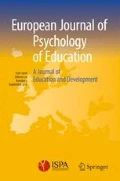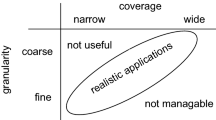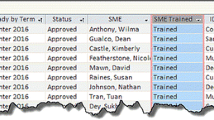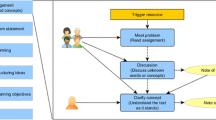Abstract
An Interactive Learning and Course development Environment (ILCE) is presented, which aims to enhance the flexibilization of a course in terms of tailoring it to the needs and requirements of individual students. The heart of ILCE forms a repository of units of learning material. The repository consists of a domain model, a semantic network of the content of a subject domain which is covered by the learning material. This model serves as an abstract representation of the units of learning material. The construction of a course is defined as the selection of a subset of the domain model. Attributes are used to express student characteristics and are linked to the domain model as variables. By adding if/then rules to the domain model, the consistency and the completeness of a selection is preserved. The building environment is used by a course team to fill a repository by designing, producing and revising units of learning material in accordance with the proposed knowledge representation scheme. The design approach a course team has to adopt focuses on building a course model next to the design of the learning material. This design approach is illustrated with examples taken from the ILCE prototype.
Similar content being viewed by others
References
Arshad, F. N., & Kelleher, G. (1993). Sola: Students on-line advisor.International Journal of Man-Machine Studies, 38, 281–312.
De Jong, T., & Sonti, L. (1994).Design and production of multimedia and simulation-based learning material. Dordrecht: Kluwer Academic Press.
Elsom-Cook, M. T., & O’Malley, C. E. (1990). Ecal: Bridging the gap between CAL and intelligent tutoring systems.Computers and Education, 15, 69–81.
Fischer, G. (1994). Computational environments in support of self-direcled learning.Proceedings of the East-West International Conference on Computer Technology in Education, EW-ED’94. Jalta, Crimea.
Gould, J. D. (1988). How to design usable systems. In M. Helander (Ed.),Handbook of Human-Computer Interaction (pp. 757–789). North-Holland: Elsevier Science Publisher.
Grandbastien, M., & Gavignet, E. (1994). ECSA: an environment to design and instantiate learning material. In T. de Jong & L. Sartri (Eds.),Design and production of multimedia and simulation-based learning material (pp. 31–44). Dordrecht: Kluwer Academic Press.
Granger, D. (1990). Bridging distances to the individual learner. In M. G. Moore (Ed.),Contemporary issues in American distance education (pp. 163–171). New York: Pergamonn Press.
Jones, A. J., & Millar, J. A. (1987). Artificial intelligence in computer aided instruction shells. In J. Whiting & D.A. Bell (Eds.),Tutoring and monitoring facilities for European open learning (pp. 249–264). Amsterdam: North-Holland.
Mispelkamp, H., & Sarti, L. (1994). DISCourse: Tools for the design of learning material. In T. de Jong & L. Sarti (Eds.),Design and production of multimedia and simulation-based learning material (pp. 45–60). Dordrecht: Kluwer Academic Press.
Peters, O. (1988). Distance teaching and industrial production. A comparative interpretation in outline. In D. Stewart, D. Keegan & B. Holmberg (Eds.),Distance education. International perspectives (pp. 95–113). London: Routledge.
Reigeluth, C. M. (1983).Instructional design theories and models: An overview. Hillsdale: Lawrence Erlbaum.
Sowa, F. (1991).Principles of semantic networks. Explorations in the representation of knowledge. San Mateo: Morgan Kaufmann.
Wenger, E. (1987).Artificial intelligence and tutoring systems: Computational and cognitive approaches to the communication of knowledge. Los Altos: Morgan Kaufman Publisher Inc.
Author information
Authors and Affiliations
Rights and permissions
About this article
Cite this article
Vuist, G.P.W. A knowledge based system for the flexible production and delivery of learning material. Eur J Psychol Educ 10, 209–219 (1995). https://doi.org/10.1007/BF03172917
Received:
Revised:
Issue Date:
DOI: https://doi.org/10.1007/BF03172917




